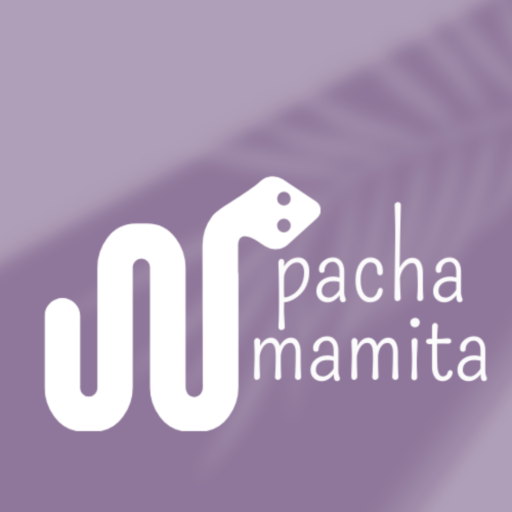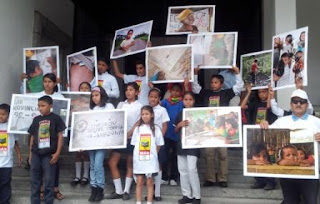![]()
Arturo Hortas, a Spanish documentary filmmaker, director and singer-songwriter (Zaragoza, 35 years old) who has already produced several documentary and research works on the situation of the Amazonian peoples, recently visited our country for another occasion to prepare his most recent material on the Sarayaku people. Ballenita Sí had the pleasure of speaking with the director of Sucumbíos, Tierra Sin Mal and Yasuní, el Buen Vivir, which we now share.
1. What brings a Spaniard (someone from the “first world”) to go deep into the Ecuadorian jungle?
I don't like to categorize, it's a shame we have to talk about world hierarchies.But I know you are referring to the economic status that is assumed of a European (even if he is from a “rescued” country) and in Spain 60 years ago there were also calamities, it is not so long ago, I am a grandson of the post-war period and rationing, there are things that are still dragging on. And remember that we have had 35 years of democracy and the current crisis is destroying the Spanish economy.
Of course there are still many differences. This is in relation to the social aspect. Regarding the environment, I have always been passionate about nature, having grown up in the mountains (Pyrenees), which led me to study veterinary medicine. I had my degree on hold for a while, but one day I discovered that my faculty had an agreement with the Universidad Campina Amazónica de Sucumbíos…this was 6 years ago, in this time I have made 6 trips to Ecuador, I have travelled a large part of the country, I have lived for a year in different stages, almost all the time in the East.
2. What is the perspective (in your opinion) of the current reality of the Amazonian peoples?
I think that indigenous peoples have a very difficult time preserving their identity. The conquest has not stopped, neocolonialism persists both externally and internally. The great misfortune of the Amazonian peoples is that they live surrounded by natural resources. The modern world has little interest in ancestral wisdom, the rich cultures that have lived in the Amazon for thousands of years and that have preserved this lung of the planet that provides 20% of oxygen and fresh water to the planet. These peoples possess medical knowledge that is being lost, no matter how much pharmaceutical companies try to patent the active ingredients of these traditional remedies, the truth is that only indigenous people know the recipe.
Indigenous peoples have been harassed to the point of exhaustion, because they represented a threat to transnational corporations. For example, the Waorani were evangelized by the Summer Institute of Linguistics, the famous SIL, evangelists who arrived in South America in the 1950s as the advance guard of the (oil) colonization that would come later. The Waorani were a warrior people, who resisted the entry of polluting oil companies. This is just one example. In Sucumbíos, on the other hand, as a consequence of the pressure of the invaders, two indigenous nationalities disappeared: the Tetetes and the Sansahuaras. The most macabre thing is that one of the oil fields built by Texaco was named the Tetete field.
3. Have you been to the jungle in other countries?
Just a little bit, right on the border of Ecuador with Peru, in an area that a few years ago was Ecuadorian territory, the area of Nuevo Rocafuerte, at the mouth of the Yasuní River in the Napo River, where the Yasuní Biosphere Reserve begins. Obviously, it was the same jungle
4. What differences or similarities do you find between these people?
I have not come into contact with indigenous peoples in Peru. I know that further south there are the Awajun, who would be the Peruvian brothers of the Shuar in Ecuador. All of them were famous for reducing the heads of their enemies...in the past, of course.
5. What differences do you find between the Amazonian peoples of the north (affected by oil exploitation) and those of the south-central region (resisting the possible entry of this activity)?
I have recently had contact with the south-central area of the Ecuadorian Amazon. Specifically, in Zamora Chinchipe I interviewed the Prefect Salvador Quishpe, a Kichwa from the Saraguro people. In Pastaza, I have been in the Sarayaku community, also Amazonian Kichwas. What I see is that the information society is helping a lot and that the indigenous people of the 21st century are much better prepared than those of the second half of the 20th century in Sucumbíos, who were not even informed of the harmful effects of oil on health and who bathed and drank from contaminated water.
In Zamora Chinchipe, the Mirador Project, the first large open-pit mining project in Ecuador, has been approved. If it is not stopped, Zamora will undergo a radical change in two years. Local authorities are suffering from misinformation about the project, the prior consultation process required by the Constitution has not been carried out correctly, and resistance groups speak of persecution and mistreatment by the companies that are going to develop the project.
Pastaza province, on the other hand, is a territory included in the XI oil round. The most emblematic case is that of the Sarayaku people, who could be compared to the village of the irreducible Gauls Asterix and Obelix who now and always resist the invader with the help of the best magic potion: the brain.
Recently, Sarayaku has received a visit from the IACHR (Inter-American Commission on Human Rights), which is the equivalent of the Hague Court in Europe. Sarayaku took the Ecuadorian State to the IACHR, accusing it of not respecting national and international laws that require prior consultation with the indigenous peoples who own the territory that is the object of oil exploration. We are talking about a territory of 165,000 hectares that the Sarayaku people consider sacred and call Kawsak sacha (living forest). We are talking about 1,400 kg of an explosive called pentolite that was buried without the permission of the community in their territory, an explosive that is used to carry out the seismic process in the exploration and that is still there despite a previous resolution of the IACHR that obliged the State to remove it. There is an unprecedented fact that will create jurisprudence: the fact that for the first time the State has assumed its responsibility for this violation of human rights, a violation that was even carried out through physical attacks carried out by personnel of the Argentine oil company CGC (Compañía General de Combustibles) and the Ecuadorian army in 2002.
6. Sucumbíos Tierra Sin Mal, a long journey through festivals and awards. What do you think has been the impact of this work on the public?
The response from the public has been impressive. The truth is that it is a work that is reaching people's hearts, it is a work that has been on several television channels, in festivals in 14 countries and I estimate that about 100,000 people have seen it.
7. Now with Yasuní, the Good Living; where are you headed as a goal?
The aim of this second documentary was to describe in a simple way a conservation initiative of 200,000 hectares in the Yasuní reserve, which was declared a Biosphere Reserve by UNESCO. This work is the second part of a series of four documentaries on the Ecuadorian Amazon.
8. What is your opinion of the Yasuní ITT proposal and where it stands today?
It is a novel initiative, as interesting as it is difficult to implement. But of course, if it were easy, it would have been done before. For the moment, it has managed to get people talking about the Yasuní reserve and the verb “yasunize” has been coined. Let’s Yasunize in many places, we must preserve these places that are so rich in environmental terms.
9. What opinion do you most frequently hear at documentary presentations?
The proposal to compensate economically for not exploiting oil is somewhat strange, although that would be a simplistic view. As soon as they go into the details and compare the information, it no longer seems so strange. As for the production of the documentary, the style is very similar to “Sucumbíos”, although perhaps “Yasuní” is more technical.
10. Sarayaku, what do you think about the process of resistance to oil activities in their territory?
The people of Sarayaku have the right to resist oil exploitation in their territory and to demand compliance with the laws on prior consultation and free and informed consent. In a certain sense, Sarayaku is also trying to become Yasunian. The participatory functioning of the Sarayaku Assembly is an example for everyone.
11. Final words
Sometimes this topic seems a bit overwhelming, especially in these times of crisis, when we look more at day-to-day survival than at the medium and long-term future. However, time passes quickly, what we think is far away arrives sooner than we think, we must act now, we must work for something more than ourselves. Indigenous peoples say “we are One”. I feel integrated with all those around me, what I do to others I do to myself. We must transcend, get away from the egoism that prevails on the planet.


